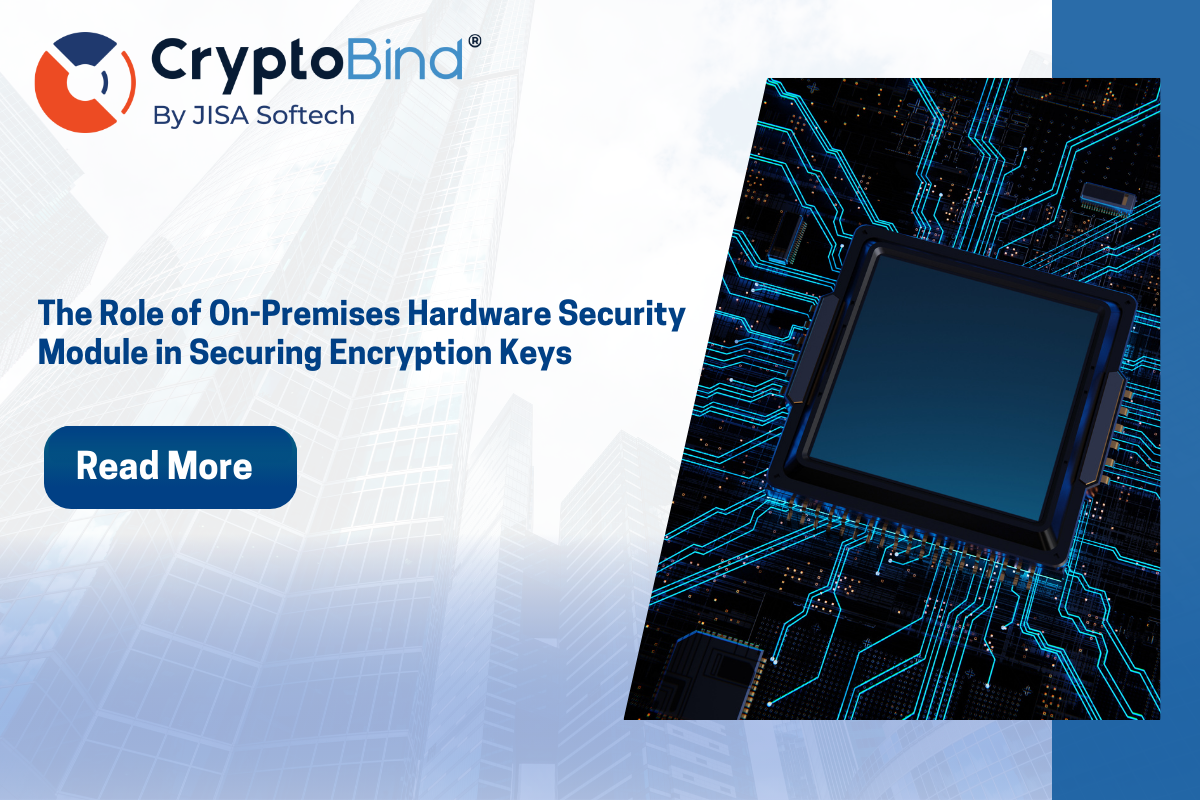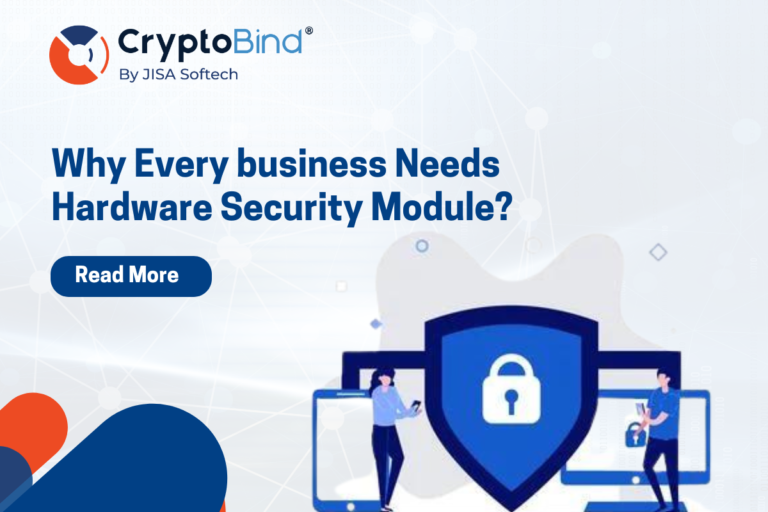The Vital Role of On-Premises Hardware Security Module (HSMs) in Securing Encryption Keys
Encryption stands as a cornerstone for safeguarding sensitive data within any organization. Complying with data privacy regulations not only shields against data breaches but also enhances an organization’s brand value. The robustness of encryption hinges on two key factors: key length and the security of the keys themselves.
Key Length and Security
Key length is a quantifiable aspect determined by encryption algorithms such as AES-128 or AES-256. In contrast, the security of encryption keys is more subjective but equally critical. The more secure the keys—whether private keys in asymmetric encryption or shared keys in symmetric encryption—the stronger the encryption landscape.
The Role of HSMs in Key Security
When it comes to securing encryption keys, Hardware Security Modules (HSMs) are the gold standard specifically those adhering to FIPS 140-3 Level 3 standards, offer unparalleled security.
Overview of HSMs
HSMs are tamper-resistant devices designed to securely generate, store, and manage cryptographic keys. They protect application keys and sensitive data by isolating them within a secured, access-controlled hardware module. Common use cases include:
- SSL/TLS certificate and encryption key management
- Application-level encryption and signing in sectors like healthcare, finance, and retail
- Digital signature operations for code and document signing
- Payment network transaction processing and PIN encryption
HSMs establish a hardware-based root of trust for cryptographic security and accelerate compute-intensive functions like encryption and signing using dedicated crypto accelerator chips.
How HSMs Work
Securing the keys in a cryptographic system is critical to maintaining a secure system. However, managing the lifecycle of those keys is a challenge. HSMs manage all aspects of a cryptography key’s lifecycle, including the following six steps:
- Provisioning: Keys are created by an HSM, another type of key management system, or a third-party organization that specializes in this. A true random number generator should be used to create keys.
- Backup and Storage: A copy of keys should be made and securely stored, in case the key is compromised or lost. They can be stored in the HSM or on external media. Private keys must be encrypted before being stored.
- Deployment: This involves installing the key in a cryptographic device such as an HSM.
- Management: Keys are controlled and monitored based on industry standards and an organization’s own internal policies. The encryption key management system handles key rotation where new keys are deployed as existing keys expire.
- Archiving: Decommissioned keys are put in offline, long-term storage for when they may be needed to access existing data that was encrypted with that key.
- Disposal: Keys should be securely and permanently destroyed only after it is determined that they are no longer needed.
The hardware security module protects cryptographic keys and handles the encryption and decryption processes.
As Organizations are rapidly adopting cloud services to leverage benefits like scalability, flexibility, and cost-effectiveness. However, alongside this cloud journey, they must prioritize data security. Encryption, including Hardware Security Modules (HSMs), becomes essential. HSMs can be classified into two categories: Cloud-based and On-Premises. Despite delivery method differences, both ensure the same cryptographic technology for secure data management. Let’s understand more about on premise HSMs.
On-Premises HSM:
On-premises HSMs are dedicated hardware appliances installed within private data centers, offering several physical protections:
- FIPS 140-3 Level 3 certified cryptographic modules
- Tamper-resistant and tamper-responsive enclosures
- Physical intrusion sensors and active anti-tampering mechanisms
- Strict physical access controls and multi-factor authentication
These protections ensure that all cryptographic operations occur within a secure, shielded environment, providing maximum protection for sensitive key material.
Advantages of On-Premises HSMs
- Complete Control and Visibility: Organizations retain full control over their HSM environment and encryption keys, ensuring compliance with stringent regulatory requirements.
- High Assurance Level: On-premises HSMs meet rigorous compliance standards, making them suitable for businesses needing total control over their encryption keys.
- Latency-Sensitive Applications: For applications sensitive to latency, on-premises HSMs eliminate network delays associated with cloud-based solutions.
- Regulatory Compliance: In regions with strict data localization laws, on-premises HSMs ensure compliance, especially when cloud providers lack local data centers.
Conclusion
While on-premises HSMs offer significant security and control, they come with substantial upfront costs, including hardware acquisition, skilled personnel, and ongoing maintenance. The cost of hardware security module is a key factor in deciding whether to opt for on-premises or cloud-based solutions.
As organizations navigate the evolving threat landscape, safeguarding encryption keys stands as a cornerstone of their security strategy. On-premises HSMs offer unparalleled protection, merging stringent physical security measures with extensive control over key management procedures. Investing in these solutions not only bolsters security measures but also ensures regulatory compliance and fortifies defenses against emerging cyber threats.
Organizations should also consider partnering with a reputable HSM provider or hardware security module company to ensure they receive the best possible service and support for their encryption needs. For more information on Hardware Security Modules, contact us today.
Contact us:
Sales@jisasoftech.com








